It is possible to copy and paste text and files from a VMware virtual machine (VM) to a physical system or vice versa. This includes copying images, formatted and unformatted text, and email attachments between the guest and host systems. This article will explain how to enable this feature and demonstrate how to copy data, files, and folders.
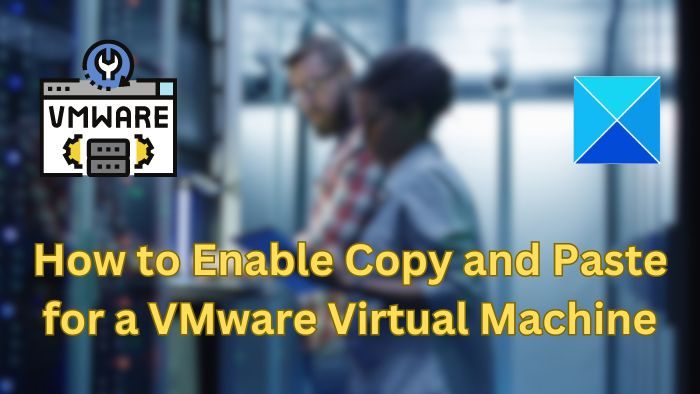
How to enable Copy/Paste in VMware
VMware provides three distinct ways to copy data, files, or folders from a Virtual Machine to a Physical one and vice versa, as mentioned below:
- Copy and Paste feature
- Drag and Drop feature
- Folder Share
1] Enable Copy-Paste using VMware Tools
If your VMWare installation and the guest OS meet the requirement, you can enable the Copy & Paste feature that works using the keyboard shortcuts Ctrl + C and Ctrl +V.
The first step or requirement to use the copy-and-paste feature is to install the VMware tools, without which the feature will not be functional. In case the application is not already available in the VM, here is how to enable:
- Open the VMware workstation.
- Click on Player > Manage > Install VMware Tools.
- Click on the option Run exe.
- Follow the on-screen instructions to complete the installation process, and restart VMware once the process is complete.
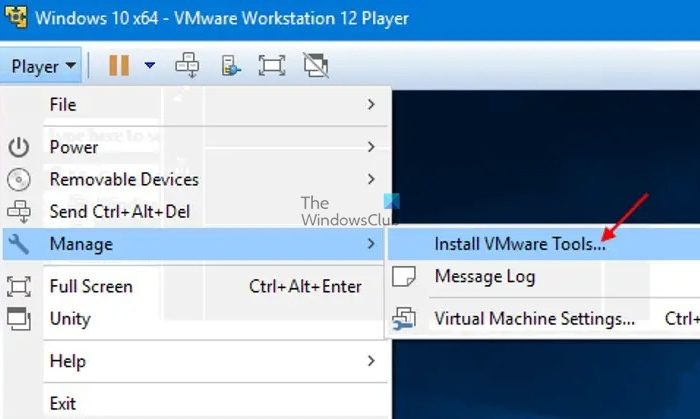
Now, you can use the Guest Isolation to configure. In the isolation option, you can restrict file operations between the virtual machine and the host system and between the virtual machine and other virtual machines.
- Click on Player > Manage > Virtual Machine Settings.
- On the Settings page, click on the Options tab and select the Guest Isolation option under it.
- On the right pane, check the option Enable copy and paste.
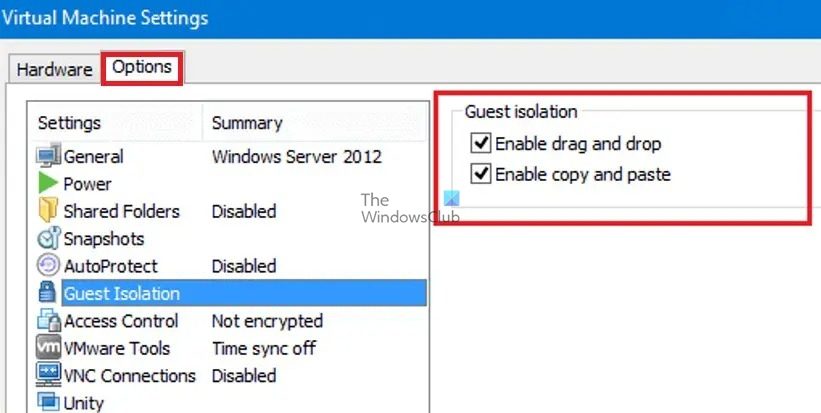
- Click on OK to save the changes and start the VM.
For the changes to take effect, please restart the VMware application. Once done, you can quickly transfer text and files between your host system and a Linux or Windows guest operating system by copying and pasting.
In case the option to install VMware tools is disabled, read on how to fix it.
2] Enable Copy-Paste using vCenter Server HTML5 Web Client
If you are using the HTML5 Webclicnet to access the VMware machines, then follow these steps:
- Shut down the Virtual Machine.
- Open the VMware HTML5 Client application.
- Select the VM on which you want to enable the copy-paste settings
- Click to expand the Advanced section on the right pane and click on Edit Configuration.

- On the Edit Configuration window, click the Add Configuration Params button three times to add three new configuration parameters.
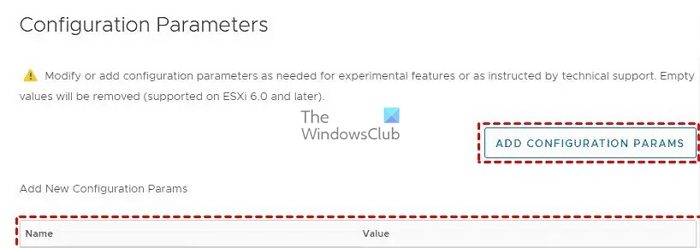
- Enter the below-mentioned commands under the Name and Value Fields :
Name: Value: isolation.tools.copy.disable FALSE isolation.tools.paste.disable FALSE isolation.tools.setGUIOptions.enable TRUE
isolation.tools.copy.disable: FALSE: This particular parameter determines the status of the COPY operation from a VM to the host system is allowed or not. Please set it to FALSE to enable copy-paste.
isolation.tools.paste.disable: FALSE: The paste option is enabled by setting the value to FALSE through this parameter.
isolation.tools.setGUIOptions.enable: TRUE: The parameter adds the context menu options between the VM and the host.
- Click on OK to save the changes and exit the configuration settings window.
- Power On the VM to use the Copy/Paste feature.
3] Enable Drag and Drop Feature
The drag-and-drop feature can copy files, directories, formatted and plain text, images, and email attachments. When the drag-and-drop feature is used, the VMware workstation copies the original file and pastes the exact image of the same on the destination location. That said, make sure to read about the requirements and restrictions.
Like the copy and paste feature, you must enable the VMware tools to enable drag and drop.
- Click on Player > Manage > Virtual Machine Settings.
- On the Settings page, click on the Options tab and select the Guest Isolation option under it.
- On the right pane, check the option Enable drag and drop.

- Click on OK to save the changes and start the VM.
Once the above configuration is completed, the concerned files or folders can be dragged and dropped from the source to the destination using the mouse buttons.
4] How to Enable Folder Copying/Sharing in VMware
VMware also allows to share folders between the host and the guest. However, the feature can only be functional with the following guest OS: Windows Server 2016/2012 R2/2008/2003, Windows 11/10/8/7/Vista, Linux with kernel version 2.6 and higher, Solaris x86 10 Update 1 or later.
- Create a folder to share on the Windows host.
- Shut down the VM.
- In the VMware workstation, select the VM with which the folder would be shared and click on Edit Virtual Machine Settings.
- On the Settings page, click on the Options tab and select the Shared Folders option under it.
- Select the Always Enabled option, and click the Add button at the bottom to open the Add Shared Folder Wizard.
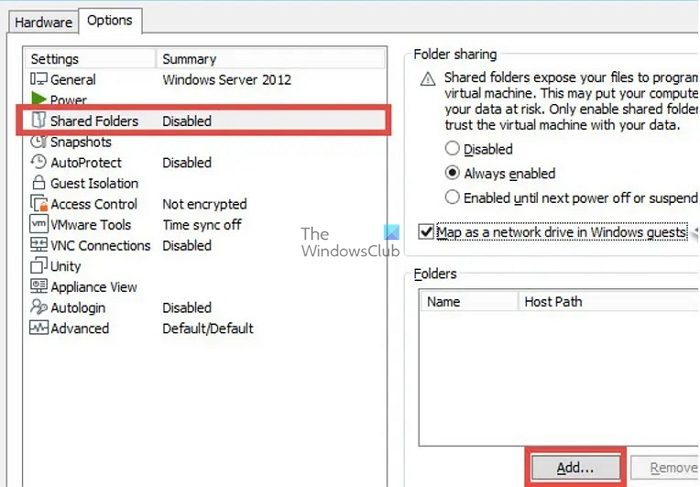
- You can then use the Add Shared Folder Wizard to add the shared folder path in the host machine. Click Browse to select the folder path you want to share, and click Next.
- On the next screen, select the additional share attributes like Enable this Share or Read-only, as applicable, and click Finish.
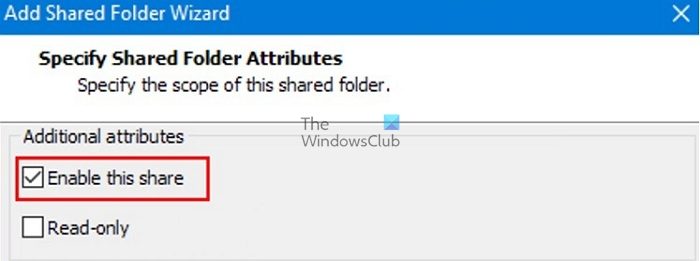
- Now boot the Virtual Machine and check for the shared folder under the following path, or you can use File Explorer to check the network folders.
/mnt/hgfs/[shared folder name]--- For Linux guests, /hgfs/[shared folder name] – For Solaris guests, and \\vmware-host\Shared Folders\[shared folder name] – For Windows Guests
Post this; you can copy and paste files using the guest OS user interface or command line tools.
I hope the guide was helpful to you, and you can easily use the copy-paste feature in VMware Virtual Machine.
How do I open VMware settings?
To start Workstation Player, you can either double-click the VMware Player icon or select Start > All Programs > VMware Player. Once the VMware Player window opens, click on “Open a Virtual Machine”. Then browse for and select the virtual machine configuration (vmx) file for the virtual machine you wish to open and click “Open”.
What is a VMDK file?
The VMDK file format is used for virtual machine (VM) disk image files. VMDK files contain a complete and independent virtual machine and are commonly used with VMware virtual appliances.